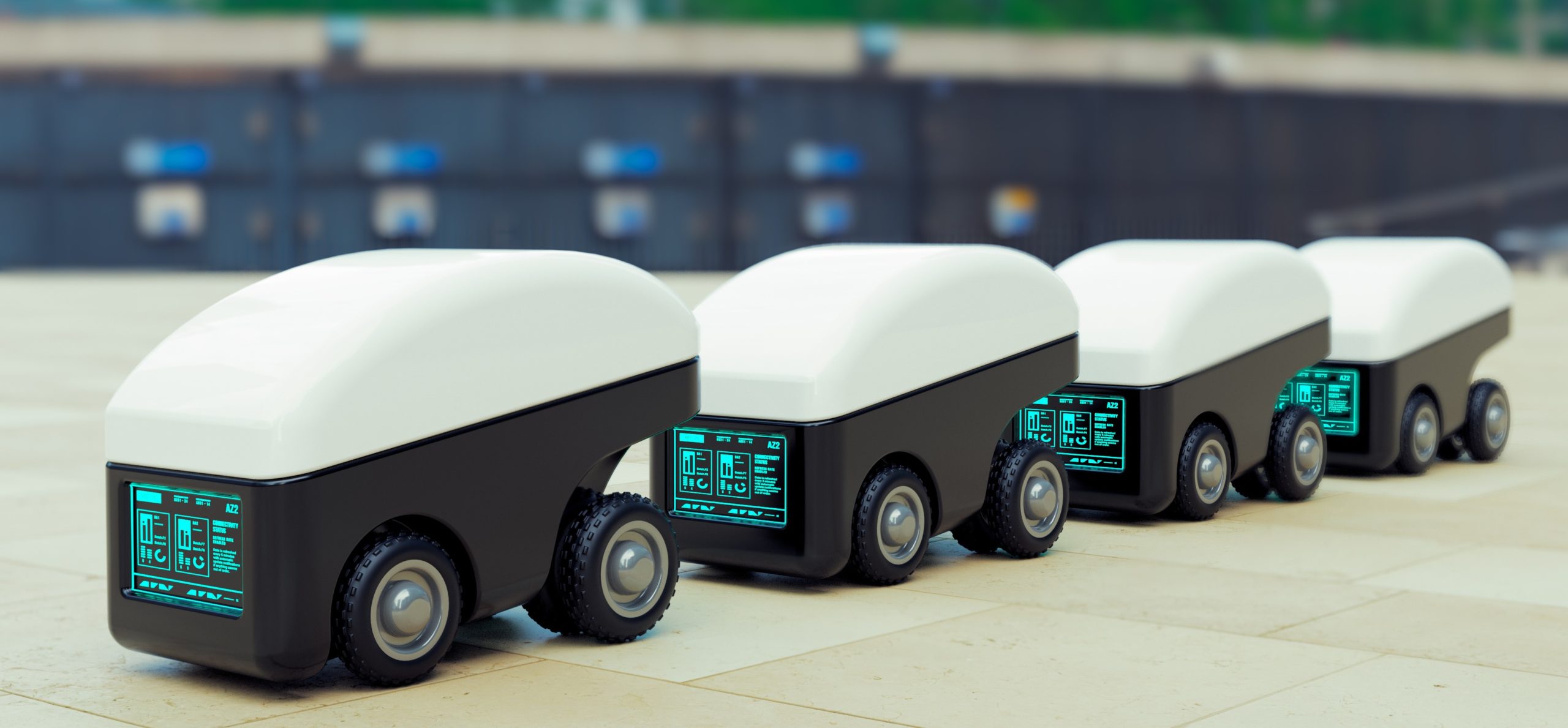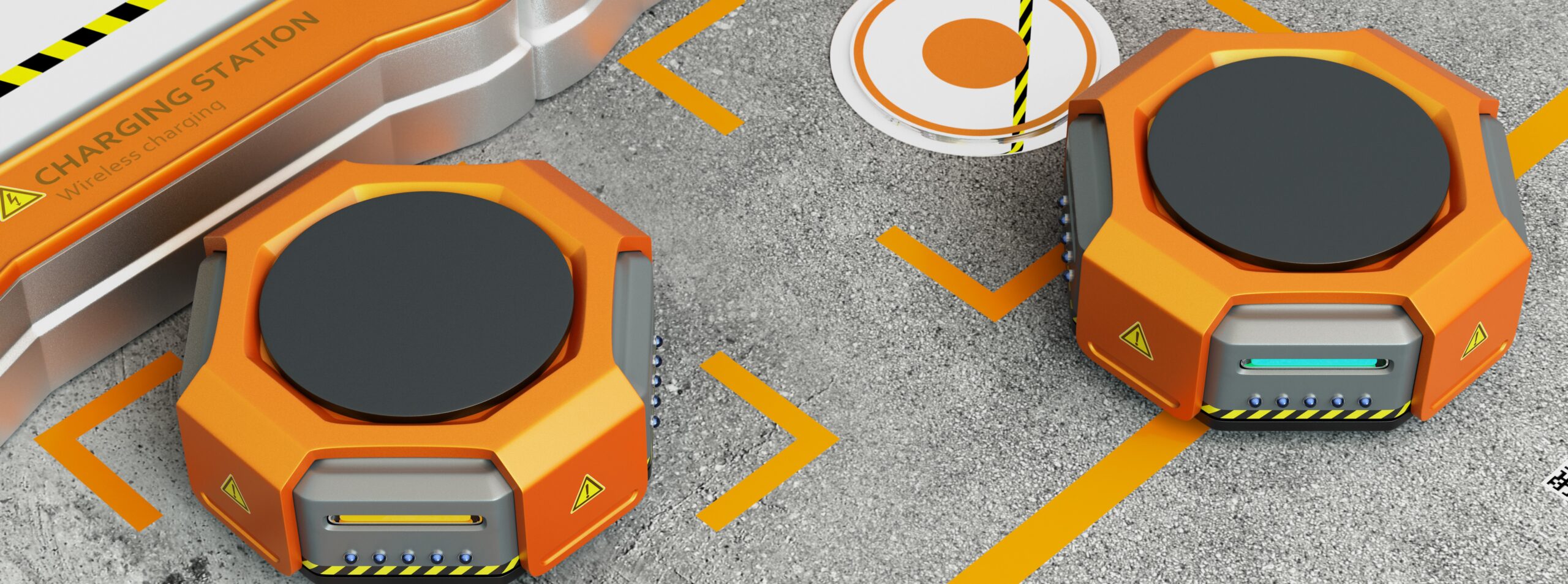
Advancements in and the adoption of wireless charging technologies have rapidly progressed in recent years. Most familiar developments pertain to consumer electronic devices like smartphones, but industry-changing commercial applications are also making significant strides.
One of the most impactful uses of wireless charging capabilities is within mobile robotics.
Autonomous mobile robots (AMRs) and automated guided vehicles (AGVs) have been accomplishing substantial efficiency gains for businesses in numerous sectors (e.g., material handling, fulfillment and logistics). However, a few technologies relevant to mobile robotics are now realizing breakthroughs—including wireless charging, which simplifies operations and management by enabling fully autonomous deployments.
With this combination, we are already witnessing the workplaces of the future.
How Does Wireless Charging Work
Considering the reliance on rudimentary lead-acid batteries earlier in the 21st century, today’s commercial wireless charging capabilities are nothing short of staggering. As the name suggests, wireless charging—or wireless power transfer (WPT)—eliminates the need for a direct, physical connection between batteries and the power sources that recharge them.
There are a few different types of WPT, but magnetic resonance is the most studied and applicable to mobile robotics..
What is Magnetic Resonance?
This WPT method successfully transmits energy by running a high-frequency current through matching coils, most commonly made from copper for its conductive properties. Synchronizing each coil’s resonance (i.e., vibration in electrical or mechanical systems caused by periodic stimulus) generates an electromagnetic field that couples—or links—them.
The electricity provided by an attached power source is transmitted by one coil and through the electromagnetic field. The other coil (located inside the robot being charged) is attached to a receiver, which reverts the transmitted energy back to usable electricity for the battery within charging vehicles, machinery, equipment, or devices.
Factors and Components for Wireless Charging via Magnetic Resonance
The essential factors and components of wireless charging include:
- Resonance – Objects that share a magnetic resonant frequency are capable of transmitting energy between each other.
- Coil Size – Resistance and inductance—respectively, the opposition to an electrical current and to a change in electrical current—are both determined by coil size (along with the shape and number of coils).
- The gap between coils – Generally, the gap between coils should roughly equal half the size of the coils themselves (or less).
- Gap alignment – The gap between coils and precisely matched gap alignment are crucial for charging. They affect the maximum distance between the charger and robot where power transfer remains efficient.
For peak transfer efficiency, the coils in the charger and the robot being charged must be identical in size, shape, gap size, and gap alignment.
The Benefits of Wireless Charging
The foremost benefit of wireless charging is that it enables the full automation of different tasks. With mobile robots being able to return to a station where wireless charging occurs, there is no need for direct intervention in their workflow or having someone on standby to plug them in.
In addition, wireless charging should be leveraged whenever working conditions pose an elevated risk of injury to employees. For example:
- If the work is being done in a hazardous environment (e.g., flammable chemicals present), manually plugging in a mobile robot is more likely to create an exposed spark that could ignite nearby substances.
- If high levels of voltage or current are needed to charge mobile robots, then expensive and larger cable insulation and physical connectors are required. Instead, the wireless charger can be leveraged to eliminate any dangerous touch points.
Conversely, the main drawback of wireless charging is that it’s expensive—as much as 300% more costly than traditional contact-based methods.
Three Main Types of Resonance Wireless Charging
With the magnetic resonance method for wireless charging, there are three distinct electrical engineering configurations that mobile robotics can leverage:
- Small gap DC/DC
- Large gap
- Large gap AC supply
Each of these configurations for enabling WPT has its tradeoffs and changes to the coil design.
Original equipment manufacturers (OEMs) and their partners developing mobile robot chargers will need to collaborate closely to identify the best solution for their market’s use cases.
Small Gap DC/DC
Small gap DC/DC is most suitable for low-cost, low-power wireless charging applications.
The solution relies on splitting the existing isolation transformer already present for DC/DC conversion in batteries between a sealed charge paddle (located off-board) and the on-board circuitry. The design allows the coil gap to be increased to 5-10mm from 1mm. This gap size increases the maximum efficient distance that mobile robots can be from the charger while simplifying its electrical engineering. Compared to a traditional contact-based connection, small gap DC/DC is 95-98% efficient and only costs around 33-66% more.
However, the small coils (and gaps) require even more alignment precision and the tightest communication feedback loop for power conversion adjustment, which leads to significant customization per application.
Large Gap Charger
Large gap charging separates the electrical components between on- and off-board, albeit according to a charger’s traditional functional building blocks.
The AC/DC conversion occurs off-board, so the energy transmitted through the electromagnetic field is already DC. The DC/DC converter remains on-board in its entirety. This electrical engineering design facilitates larger coils and gaps—up to 12” and 6”, respectively—but compared to traditional contact-based charging, the efficiency can fall to 90-94% and costs can increase up to 200%.
The Society of Automotive Engineers has released the SAE J2954 standard to specify this wireless charging method’s requirements for recharging electric vehicles via WPT.
Large Gap AC Supply
The coil structures used in large gap AC supply resemble those in large gap chargers, but the engineering for the power transmission side resembles a contactless AC extension cord.
This engineering design connects the AC power source or electric vehicle supply equipment (EVSE) to a Ground Assembly located off-board. On-board, the system relies on a vehicle assembly that allows the same engineering design as traditional contact-based charging.
Although this system is currently being deployed, the reduction to 75-90% efficiency of wired transfer and 200-300% cost increase means further development is needed. Otherwise, the weight, inefficiencies, and costs may stifle long-term adoption.
OEMs and Partners Developing Wireless Charging for Mobile Robotics
As with contact-based charging, close collaboration between mobile robot OEMs and their charger development partners is still necessary. These WPT technologies remain in their early days, and while the potential capabilities and use cases are increasing, more development is still warranted.
Based on their customers’ needs and considerations, OEMs and partners must evaluate which WPT solution provides the optimal solution today and prepare for the technology’s next breakthrough.
The WPT technology that best suits your mobile robot needs right now may change within the next decade—or it might not even exist yet.




